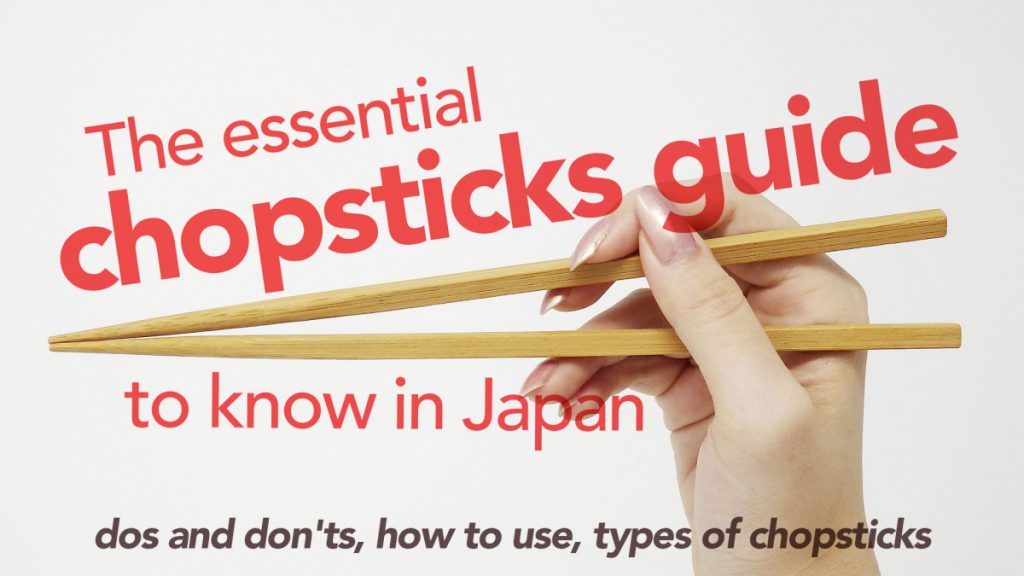It is no doubt that chopsticks are the single most important utensils in Japan. The most amazing thing about using chopsticks is that you can use them to eat everything — from sushi to ramen, from meat to salad, and so much more! In particular, there are some dos and don’ts regarding chopsticks as well. Here is an introduction to Japanese chopsticks.
The bridge between mortal and immortal
The Japanese word for chopsticks is “hashi”, which is a homophone with the Japanese word meaning “bridge”. In fact, chopsticks do act as a bridge in different occasions and rituals. In the past, they were used for sharing food with the gods rather than for people taking meals. The chopsticks used for ceremonies are tapered on both ends. When those chopsticks were used to eat the food that was offered, mortal and immortal dined together. Today, you can still see ceremonial chopsticks during New Year celebrations.

Find your own pair of chopsticks
Unlike Chinese and Korean families, who usually keep a collection of a dozen chopsticks in a box, Japanese families tend to keep personal pairs of chopsticks for each family member. The everyday use chopstick is tapered at only the end users to grasp the food. You will find a vast variety of designs, chopsticks made from wood, lacquer, plastics, crystals, metals… Modern designs may include popular cartoons, flowers of the seasons, and even a customized name-carved on the chopsticks as well. There are also chopsticks for different cooking methods, such as long wooden chopsticks for deep frying and stainless steel chopsticks for Japanese barbecue.


How to use chopsticks
This is a standard way of how to hold the chopsticks, however, it is up to you to decide the most comfortable and efficient way to use chopsticks. Once you master the skill, you can use chopsticks to enjoy all kinds of food.
1.Grasp one stick a third of the way down between thumb and index finger, supporting it from underneath with the middle finger
2.Place the second stick in the bend between thumb and index finger supporting it with the base of the thumb and ring finger
3.Move the top chopsticks up and down, making sure to keep the back ends from coming together
Disposable chopsticks (waribashi)
You will easily find disposal chopsticks made from scrap wood or bamboo in many restaurants, supermarkets, convenience stores, or takeout shops. They are usually attached only at one end to make them easy to separate. Some argue that even though they pose a lower threat to the environment by using scrap wood to produce disposable chopsticks, it is more sustainable to bring your travel chopsticks when dining out or take away.

Chopsticks etiquette tips
Don’t pass food from one set of chopsticks to another. When you want to share food, it may seem quick and convenient to pass something from your chopsticks directly to your friend’s chopsticks. However, this is a taboo on the Japanese table, as it resembles the way that the bones of the deceased are passed during Japanese funeral rituals.

Don’t stick your chopsticks into the rice. Many foreigners may find it easy to hold the chopsticks by putting them upright into the rice. However, it should only be done during funeral rituals. Try to use chopsticks holder or place your chopsticks uncross on your bowl.

Don’t play with your chopsticks. This is a basic table manners in Japanese culture. Even though chopsticks may look like a mini-drumsticks or a perfect pen to spin, do not start your performance while waiting for food to arrive. It is considered childish, just like playing with your fork to fly food into your mouth.

There are many traditions and practices for foreigners to get used to when they first come to Japan. This is generally understood by the Japanese, but knowing more about the culture will definitely help you make a better impression with the people. Let’s practice using Japanese chopsticks together buddy!

